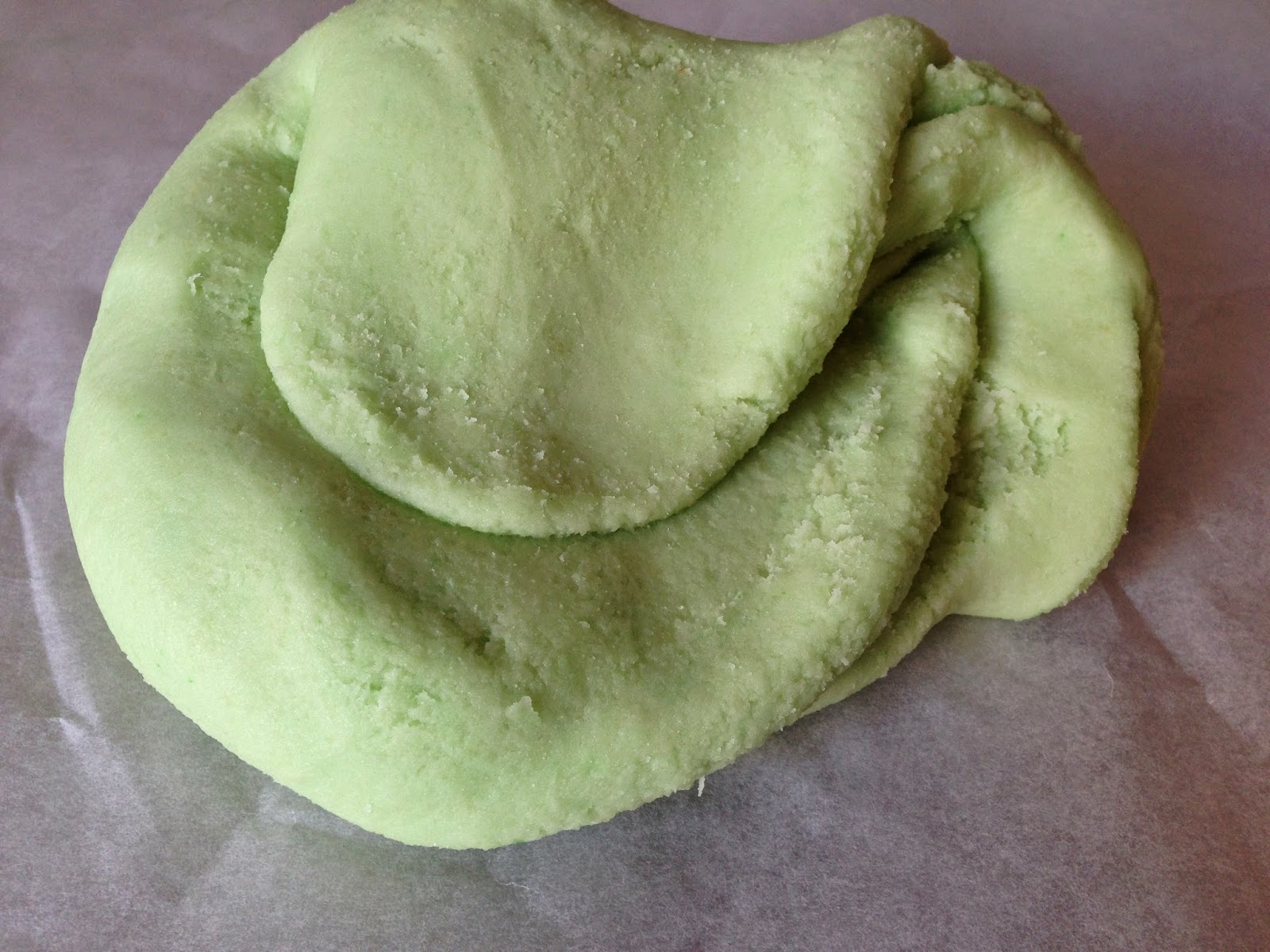This Swedish Princess layer cake is pastel green and full of custard, jam, marzipan, and a mound of whipped cream!
This cake was one of the Technical challenges on the Great British Bake Off 2014, I have promised myself to try each challenge and then to sell the result in my Fancy cafe.
Adapted from Mary Berry's Recipe
Preparation method
Adapted from Mary Berry's Recipe
Preparation method
For the vanilla custard
- 600ml milk
1 vanilla pod, split in half lengthways and seeded scraped out
6 free-range egg yolks
100g caster sugar
50g cornflour
50g unsalted butter
For the Jam
200g raspberries
175g caster sugar
For the Sponge
5 medium free-range eggs
5 oz caster sugar
2½oz cornflour
2½oz plain flour
1 tsp baking powder
50g butter, melted
- Filling & topping
600ml pints double cream
50g dark chocolate (36% cocoa solids), melted
For the Marzipan
400g ground almonds
150g caster sugar
250g icing sugar, plus extra for dusting
2 medium free-range eggs, beaten
1 tsp almond extract
green food colouring paste
- For the vanilla custard, pour the milk into a pan with the vanilla seeds and vanilla pod and place over a low heat until just simmering. Remove from the heat.
- In a large bowl, whisk the egg yolks, sugar and cornflour together until pale and creamy.
- Remove the vanilla pod from the warm milk.
- Stir the warm milk slowly into the egg mixture. Pour the mixture back into the pan and cook over a low heat for 4-5 minutes, whisking, until the mixture thickens. (It should be very thick.)
- Remove from the heat and beat in the butter until melted and incorporated. Transfer to a bowl, cover the surface with clingfilm to prevent a skin forming and leave to cool. Set aside to chill in the fridge.
- For the jam tip the raspberries into a deep saucepan with the sugar and two tablespoons of water. Cook gently over a low heat, stirring occasionally, until the sugar is dissolved. Bring the mixture to the boil and boil vigorously for about four minutes, or until the temperature reaches 104C/219F on a sugar thermometer. Transfer to a heatproof bowl and leave to cool completely.
- For the sponge, preheat the oven to 180C/160C(fan)/Gas 4. Grease and line the base of a 23cm/9in springform tin with baking parchment.
- Put the eggs and sugar into a large bowl and using an electric mixer, whisk together until the mixture is very pale and thick and the whisk leaves a trail on the surface when lifted. This will take about five minutes.
- Sift the cornflour, flour and baking powder over the egg mixture and carefully fold in using a large metal spoon. Fold in the melted butter, taking care not to over mix.
- Pour the mixture into the lined tin and bake for 30-40 minutes until the sponge is golden-brown and has just started to shrink away from the sides of the tin. Remove from the oven and set aside to cool. When cool enough to handle, turn out on to a wire rack to cool completely.
To assemble the cake:
- using a serrated knife, cut the cake horizontally into three even layers. Place one of the sponges onto a serving plate. Spread a very thin layer of custard over the base of the first sponge.
- Spoon a quarter of the custard into a piping bag fitted with a small plain nozzle and pipe a border around the edge of the sponge – this is to contain the jam.
- Spoon the jam over the sponge, and spread evenly within the border.
- In a bowl, whip double cream to firm peaks. Fold half of the whipped cream into the remaining custard.
- Spread 1/3 of the custard cream over the jam.
- Place the second sponge on top and spread the remaining custard cream over.
- Place the third sponge on top. Spoon over the remaining whipped cream covering the sides and smoothing into a small dome shape on the top. Set aside in the fridge for an hour.
- For the marzipan, mix the ground almonds and sugars in a mixer fitted with a dough hook, before adding the eggs and almond extract.
- Knead in the bowl until it forms a stiff dough. Turn out onto a surface dusted with icing sugar. Using a cocktail stick add a tiny amount of green food colouring and knead to an even pastel green colour.
- Roll out the marzipan on a surface lightly dusted with icing sugar, to a 40cm/16in diameter circle, large enough to cover the cake.
- Lift the marzipan up over the cake and using your hands, shape the marzipan around the sides of the cake to get a smooth finish. Trim any excess.
- Spoon the melted chocolate into a small paper piping bag. Snip off the end and pipe a swirls over the top of the cake.























































